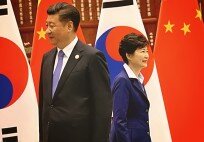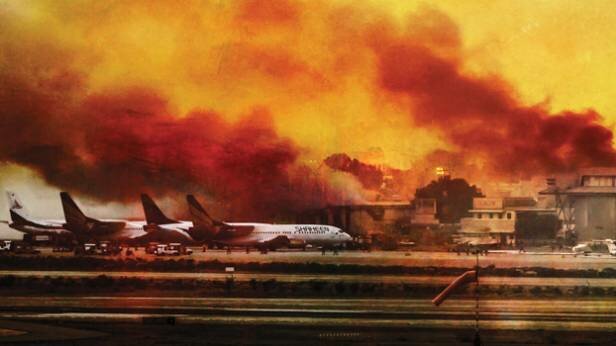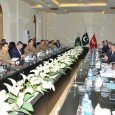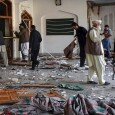By Dr. Maria Sultan –
The art of the possible
In the 21st century, non-state actors are engaging as equal partners in the national security debate. This has created a dynamic where information platforms and institutions are at the center of the new security challenges to the writ and credibility of the state; both in terms of the demands made on security organizations and on the state apparatus to reestablish state legitimacy.
In contemporary geopolitics, the battles are no longer between state and non-state actors but are with supra-individuals, those individuals who exploit both the national and international space for their desired objectives. These supra-individuals have the capacity to manipulate networks, organizations and state institutions to create waves of instability and create discord at the center of the state institutions. Explosions are still a viable tool of war, but implosions are the new defeat mechanisms.
The wars of this era are defined by organized chaos, battles of networks, reduced state capacity and enhanced space of operations for supra-individuals to access the global commons, for instance, the information and communications super high ways. Interestingly, in this battle for space and operations the importance of narrative building cannot be understated.
Narratives are vital in deploying non-kinetic means for kinetic effect. The mechanism for success in modern warfare is the ability of one side to dominate the eight dimensions of conflict:
1) The information domain (control of dissemination of facts, propaganda wars and cyber warfare); 2) The kinetic domain (use of force and violence, including terror attacks and target killings); 3) The cultural domain (strategic cultural ingraining and imperialism); 4) The state domain (exploiting a state’s inability to redress the problems of its populace); 5) The legislative domain (international laws and domestic legislative space for the conduction of operations); 6) The economic domain (use of economic tools for coercion or disruption); 7) The technological domain (use of research and technology to augment kinetic and non-kinetic warfare); 8) The non-kinetic domain (ability of networks to exploit non-violent means for strategic effect and to create space for organized crime, and initiative dominance).
Since the center of gravity in this last kind of warfare is determined by the credibility of state institutions, institutional implosion and loss of public confidence create a ready environment for violence. What is also important is the invisibility of the disruptive forces, including individuals and networks looking to dominate the traditional domains of state power. The enhanced power of the supra-individual and private networks is linked to the increasing effects of globalization, absence of the rules of engagement in the information and kinetic domains, easy access to technology and the vulnerability of state assets to technological belligerence; all wars are now local wars with global effect.
The war objectives are now disrupting strategic communications, cutting down avenues for initiatives, inducing leadership crisis, reducing the space of military and paramilitary operations, reducing legitimacy of the use of force by the state and state institutions.
The idea is to create implosion mechanisms within state institutions and networks, create legitimacy deficits between the state and the masses and exploit internal and external cultural and political fault lines.
The most important aspect in this warfare is the role of networks to use organized crime to generate economic, political and cultural chaos. Pakistan is a country that has witnessed in its territorial space the full onslaught of non-kinetic or fifth generation warfare.
The seven fault lines which have been targeted are the following; ethnic tensions, religious and sectarian tensions, civil-military tensions, political tensions, the center-federation debate, historical/regional tensions and tensions in foreign relations/external pressures.
The first fault line identified above is spurting violence in FATA where terrorism has been equated to a geographic location, thereby demonizing an entire ethnicity; the increased and sustained drone attacks in FATA supplement the deepening of this fault line and ensure the continuance of violence in Pakistan as a result of terrorist breeding grounds falsely enshrined in the ethnic makeup of the people of FATA.
The second fault line mentioned above has been used to target the traditional Shia-Sunni sectarian divide in Pakistan. The third has been used to create a social divide on the basis of military incursions into civilian space, causing a legitimacy failure in either civil or military institutions, the fourth is related to this last one and has caused a perception of institutional decay related to state-run organizations such as PIA , national railways, electricity, oil and gas, there is a constant sense and talk of implosion as state institutions collapse. There is also constant questioning of the credibility of the Pakistani armed forces and paramilitary forces to be the only legitimate actors able to use force in Pakistan.
The exploitation of the bloodied history with India and the neo-imperialistic relations with the USA also round up the last two fault lines. While each fault line has created a negative ripple effect on its own, collectively they present a most dangerous onslaught on the Islamic identity and ethnically pluralistic nature of the state of Pakistan, not to mention the socio-economic divide between different segments of the country that have lead to a constant struggle for a well defined social, cultural and strategic identity of the state of Pakistan.
Pakistan as a state has faced the exploitation of these fault lines by various networks all aimed to increase vulnerabilities and set the institutional implosion process going, however it is the ability of the leadership to ascertain the full thrust of the processes unleashed and the institutional robustness required to withstand and even overturn the assault.
This has of course led to an increase in demand, from security organizations, to perceive and plan for not only the linear but also non-linear state level threats. It is important then to create a narrative that improves the reputation of state institutions in the eyes of the public and provides a tool for communicating with the multiple stakeholders through various platforms.
There used to be a legacy of secrecy with regards to community development, policymaking, military objectives and informing the public where it came to defining security narratives, a policy of the less people know, the better.
But what is needed now is for the state and its institutions to regain the initiative in all domains of conflict, offer a clear and concise narrative to the public, and rebuild credibility through openness. All of this is imperative if we are to survive the age of non-kinetic warfare, where secrecy feeds insurgency and the divide between state and non-state actors is not given, but a function of the role of networks and the ability of supra-individuals to dominate the battlefield.
There is a need to build a policy of evidence that can bring together the links of paramilitary, the public good and public policy buy-in, based on an advocacy campaign, shared objectives and a unified national security framework, highlighting the achievements of the state in service of the people of Pakistan, for the battlefield of non-kinetic warfare is the human mind.
The importance of creating national standards, policy awareness, as well as to balance the societal pressure created by non-state actors and enemies of the state, requires a proactive approach.
This translates into building platforms that can allow for policy debate towards state campaigns, creating shared values that cut across ethnic and sectarian divides, invigorating national narratives and bringing together traditional and non-traditional partners; unfortunately the initiative lies with the enemies of the state for now, they sow ethnic, sectarian, regional and societal conflicts with impunity.
It is time we understand the changing nature of conflict, the new domains of warfare and most importantly the need to project threats away from the internal fault lines of Pakistan so that we can regain the initiative and embrace the century of non-kinetic warfare as victors, not victims.
The power to change lies in the ability of the state, its leaders, its institutions and its people to respond to the challenges of non-kinetic warfare by removing societal fractures and fault lines, and dominating the narrative domains of conflict.
The writer is the Director General of South Asian Strategic Stability Institute (SASSI) think tank based in Islamabad






























































































